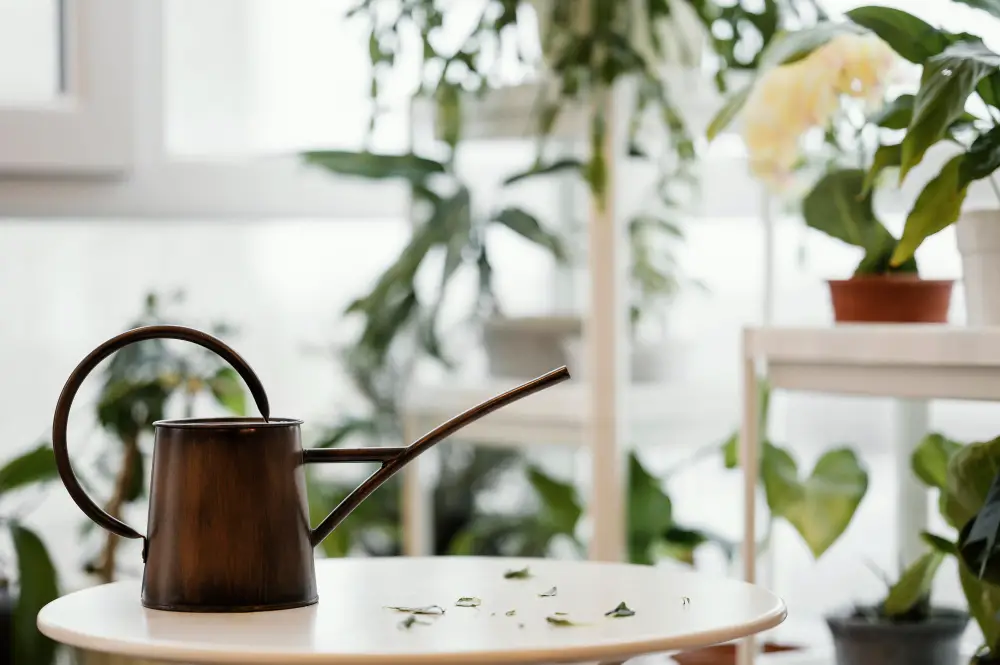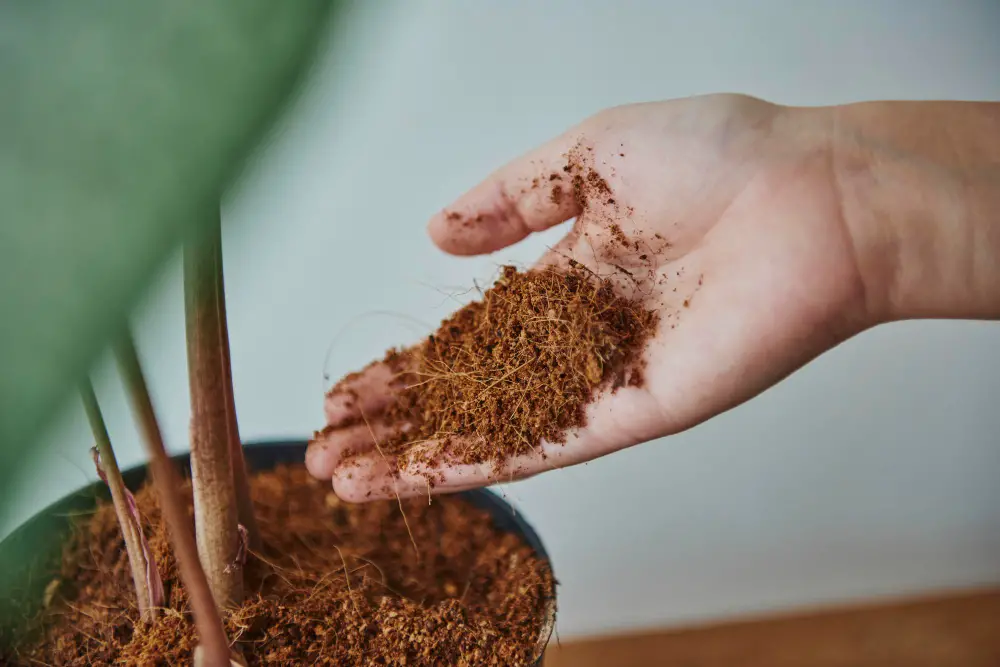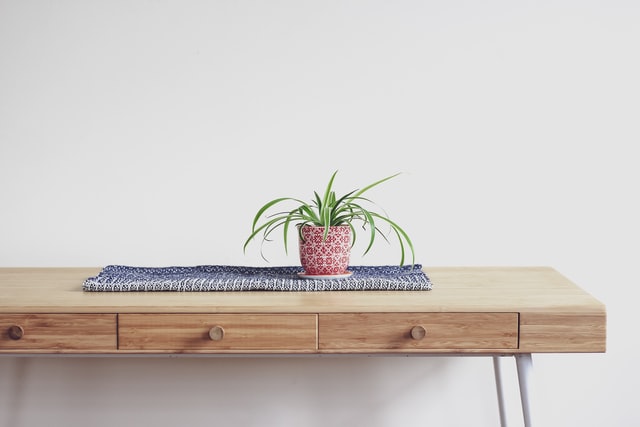We’ve had a few people ask us ‘Why is my Spider Plant drooping’. So we decided to create this blog post to explain how to take care of a Spider Plant and why it’s drooping..
Table of Contents
Why is my Spider Plant drooping? The Problem and How to Fix It
A major problem with Spider Plants is that they can get pretty droopy if something isn’t correct. This is typically a forewarning that further symptoms are likely to arrive, therefore it is to your advantage if you have detected it at this level because it will make it much simpler for you to resolve the issue if you do.
In this article, we will walk you through each of the causes that might result in your plant drooping, as well as the solutions that will fix the problem and make your plant appear to be in good health once more!
Read more: The complete guide to repotting a spider plant
A typical reason for drooping Spider Plant leaves is overwatering.

Overwatering is the most likely reason if the drooping leaves are accompanied by dark brown blotches yet the leaves aren’t crispy. These plants are quite resistant and may survive in a variety of situations, including damp soil for a period of time.
Overwatering, on the other hand, will cause their leaves to become limp and mushy as their roots decompose and get mushy. During the warmest months of the year, you should be watering your plant around once per week, but in the fall and winter, you should water it less regularly.
Read more: Why Is My Spider Plant Pale And Limp?
How can I tell if the droopy leaves are caused by overwatering?
If you suspect that you have overwatered your plant, it is preferable to replenish any damp soil immediately rather than waiting for it to dry out over time.
If you’ve been overwatering your plants, you’ll notice that the roots have become mushy and black in color. You may also be able to detect the scent of stagnant water in the soil, which may be extremely distressing.
Read more: Why Spider Plant Leaves Bend?
How do I fix an overwatered Spider Plant?
Each time you water your plant, make sure to check the soil moisture levels beforehand. This ensures that you only provide watering to your plant once the potting mix has dried out.
One of the two approaches described here is often the one that we take. First, we check the water levels in the potting mix using either a moisture meter or our finger. If it is still moist after a few days, you should wait some more before you water it again.
As previously stated, you may also raise your Spider Plant. Because you don’t want to harm your back or do anything else to yourself while doing this, you should only do this if your plant isn’t too big yet.
You won’t have to deal with this problem again if you use self-watering pots and a decent moisture meter.
Read more: Should I Cut Bent Spider Plant Leaves?
Droopy Spider Plant leaves can also be caused by drainage issues.

It is possible that it is not your watering schedule that is causing your plant’s leaves to droop and fall off, but rather incorrect drainage. This may take place either as a result of the soil or the container it was grown in.
A tiny bit of perlite can help with drainage, and you should always verify that your pot has adequate drainage holes to let any surplus water to flow out into a saucer or planter.
You should also think about using clay or terracotta pots since they are porous, which means that some moisture is able to escape out of the edges of the container. Clay and terracotta pots are also good options.
There is a good chance that you purchased your Spider Plant in a plastic pot. Plastic pots have a lot of benefits for plant shops, but they aren’t the ideal for your plants because they retain every single drop of water.
So it is occasionally worth paying a little extra to ensure that your Spider Plant’s roots are not resting in too much water.
Read more: How Do You Fix A Wilted Spider Plant?
A lack of water can also produce a drooping Spider Plant.
Your plant may suffer damage in more ways than one if it receives insufficient water; this is true for many types of plants, not only Spider Plants. It can result in dry leaves, poor growth, and nutritional shortage. However, drooping leaves are one of the earliest indicators of underwatering, so this is an important warning sign to be aware of.
If the soil has been excessively dry for an extended period of time, you may notice that the stems and leaves of the plant appear to have lost some of their vitality. To determine how dry the potting mix is, you can use the methods that we discussed above.
If you have been giving your plant too little water, give it a tiny bit of water every other day for the next week. If its habitat changes from one extreme to the other, your first inclination may be to give it a lot of water very quickly. However, this might be dangerous to your Spider Plant since it causes its environment to go from one extreme to the other.
It might be wise to invest in a moisture meter, since these handy devices eliminate all guesswork from watering.
Overheating might also be indicated by drooping Spider Plant leaves.
Aside from watering concerns, hotspots may also cause problems with your plants and may be the cause of your Spider Plant drooping. If your plant is really close to the window, then during the summer, the bright light may make that location a lot warmer than the rest of your house. Because of this, you could not even notice that a hotspot has formed in your home if the plant is in such a close proximity to the window.
Your plant will droop as a result of the increased rate at which it uses up the available moisture if it is being subjected to a great deal of heat. A digital thermometer is the greatest approach to truly understand how the temperature fluctuates around your plants and will assist you in finding a better location to avoid future harm to your plant.
Those are the most likely explanations for why the leaves on your Spider Plant have begun to droop. If your plant has no additional issues, the problem should go away in a few days, and your plant should appear healthy and happy again.
Ensure that your Spider Plant doesn’t show any further indications of distress in the following weeks by keeping a watchful look out for any drooping leaves.
Read more: Why is my Spider Plant drooping?
Conclusion
Why is my Spider Plant drooping?
It’s essential to water your spider plant correctly if you want it to stay healthy and colorful. You should also pay attention to the seasons so it doesn’t get too dry from too much sun or too cold in the winter.
Bacterial leaf blight is a frequent problem with spider plants, but it may be avoided by periodically removing dead leaves and keeping a look out for insects that may spread the illness.
Last but not least, avoid giving your spider plant an excessive amount of fertilizer as this will result in more drawbacks than benefits in terms of the plant’s development rate and overall health. At first sight, all of these instructions may appear to be confusing, but if you follow them properly, you should have success in growing your spider plant.
Consider their habitat, and you will be rewarded with an abundance of healthy leaves.
Read more: Why Are My Spider Plant Leaves Folding?
Photo by Abel Y Costa on Unsplash


